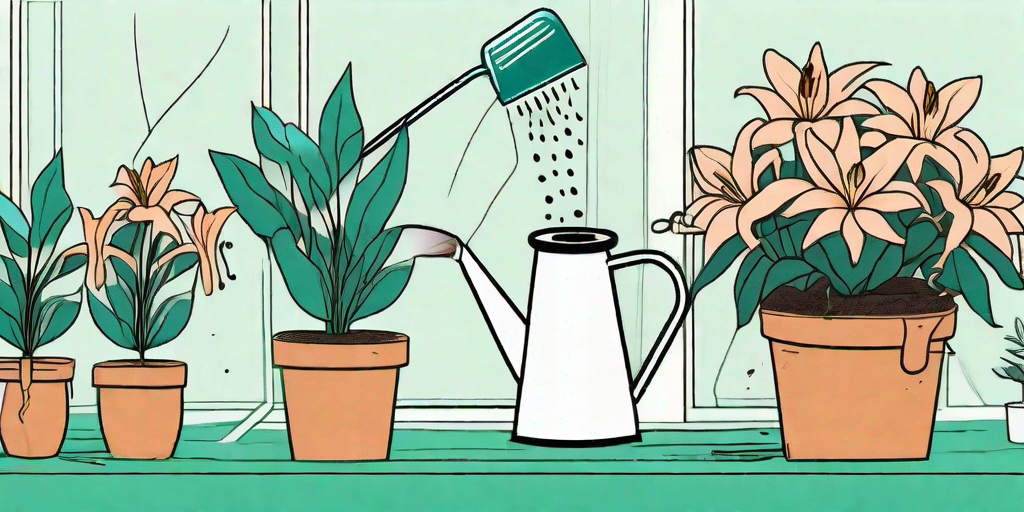
Welcome, budding gardeners and lily enthusiasts! If you've ever found yourself gazing at a lily, mesmerized by its elegance and beauty, and thought, "I wish I could grow these in my own garden," then you're in the right place. We're about to embark on a journey from the roots to the blooms of transplanting lilies. Don't worry, it's not as daunting as it sounds. In fact, it's quite a fun and rewarding process. So, roll up your sleeves, grab your gardening gloves, and let's get started!
Understanding Lilies: More Than Just a Pretty Face
Before we dive into the nitty-gritty of transplanting lilies, let's take a moment to appreciate these botanical beauties. Lilies are perennial plants with large, often fragrant flowers. They come in a rainbow of colors and a variety of shapes, making them a popular choice for gardens and floral arrangements.
But lilies are more than just a pretty face. They have a rich history and symbolism in different cultures. In ancient Greece, they were associated with the goddess Hera and represented purity and innocence. In China, they are a symbol of good luck and happiness. So, when you're transplanting lilies, remember, you're not just handling a plant; you're holding a piece of history and culture.
When and Why to Transplant Lilies
Now, let's address the elephant in the garden: when and why should you transplant lilies? Well, lilies, like any other plants, need room to grow. If they become too crowded, their growth can be stunted, and they may not bloom as beautifully. That's when you know it's time for a change of scenery.
The best time to transplant lilies is in the fall, after they have finished blooming but before the ground freezes. This gives them enough time to establish their roots in their new home before the winter sets in. However, if you missed the fall window, don't panic. You can also transplant lilies in early spring, just before new growth starts.
How to Transplant Lilies: A Step-by-Step Guide
Step 1: Choose the Right Spot
Location, location, location! This real estate mantra also applies to lilies. They need a spot with well-drained soil and at least six hours of sunlight each day. If your garden doesn't get that much sun, don't despair. Lilies can tolerate partial shade, but they may not bloom as profusely.
Also, consider the height and color of your lilies when choosing a spot. Taller varieties can provide a stunning backdrop for other plants, while brightly colored lilies can be a focal point in your garden.
Step 2: Prepare the Soil
Lilies are not very picky about soil, but they do appreciate a little TLC. Add some compost or well-rotted manure to enrich the soil. If your soil is heavy clay, add some sand or grit to improve drainage. Remember, lilies don't like wet feet!
Once you've prepared the soil, dig a hole about three times as deep as the height of the bulb. This gives the roots plenty of room to grow.
Step 3: Lift and Divide the Lilies
Now comes the fun part: lifting and dividing the lilies. Use a garden fork to gently lift the lilies from the ground. Be careful not to damage the bulbs. Once you've lifted the lilies, you can divide them by gently pulling apart the bulbs. Each bulb should have a few scales and roots attached.
Inspect the bulbs for any signs of disease or damage. Healthy bulbs should be firm and free of spots or blemishes. Discard any bulbs that look suspicious. Remember, it's better to be safe than sorry!
Step 4: Plant the Lilies
Place the lilies in the hole with the pointy end facing up. Cover them with soil, leaving the top of the bulb just below the surface. Water them thoroughly, but don't overwater. Remember, lilies don't like wet feet!
After planting, add a layer of mulch to help retain moisture and keep the weeds at bay. Then, sit back and wait for the magic to happen!
Common Mistakes to Avoid
Transplanting lilies is not rocket science, but there are a few common mistakes to avoid. One is planting the lilies too deep or too shallow. Another is overwatering or underwatering. And let's not forget about choosing the wrong location. Remember, lilies need sun, well-drained soil, and room to grow.
Another common mistake is neglecting to divide the lilies. If you just move the whole clump to a new location, you're not solving the overcrowding problem. So, don't be afraid to divide and conquer!
FAQs
Can I transplant lilies in the summer?
Transplanting lilies in the summer is not ideal, as it can stress the plants and affect their blooming. However, if you must move them in the summer, do it early in the morning or late in the evening to avoid the heat of the day.
How often should I water transplanted lilies?
Water the transplanted lilies thoroughly after planting, then water as needed to keep the soil moist but not soggy. Once the lilies are established, they can tolerate dry periods, but they will appreciate a drink during prolonged droughts.
How long will it take for transplanted lilies to bloom?
Transplanted lilies may take a year or two to settle in and start blooming. So, be patient and give them some time. The wait will be worth it when you see those stunning blooms!
Conclusion
Transplanting lilies may seem like a daunting task, but with a little knowledge and a lot of love, you can transform your garden into a lily paradise. So, don't be afraid to get your hands dirty and embark on this gardening adventure. Remember, every flower must grow through dirt. Happy gardening!















